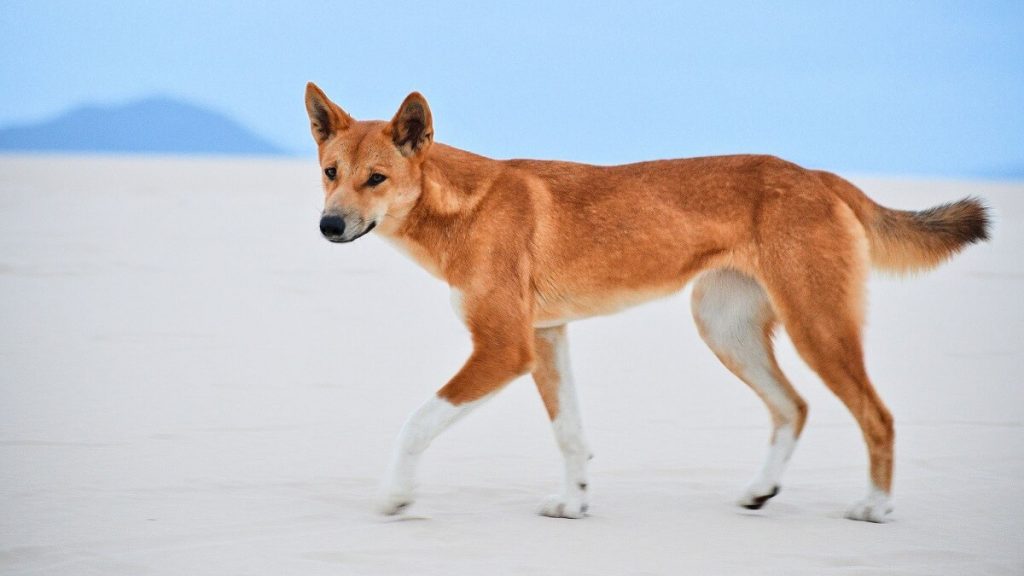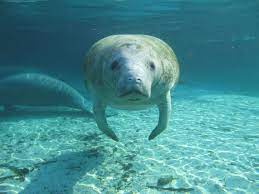Crops around the world are under threat from climate change. Chocolate and coffee may merely be crops that the western wealthy countries enjoy, however palm oil in particular has been planted with the specific aim, in many cases of providing carbon neutral fuels. This is of course stupid as in many of these areas vast carbon sinks have had to be destroyed, releasing vast quantities of carbon, meaning that these palm oil plantations will have to produce oil in places for more than a century before they get back to carbon neutral.
Continue reading “Chocolate coffee soya and even palm oil appears to be under threat by climate change”Recent evidence suggests that dingoes arrived in Australia 1500 years later than first thought: why is this important and should it give us more courage in repatriating Tasmanian devils to the mainland
While the dingo made look like part of the native fauna of Australia, that is not the case. They were bought there by aboriginal people.

A recent study has shown there are really two species of giant panda
Pandas, like many other mountain species, are liable to get marooned on islands in the sky, and recent genetic analysis has shown that there are really two species of giant panda which have not interbred for more than 300,000 years.

One of these populations is in Sichuan province, the other is in Shaanxi province. The latter population have a different look with their heads looking more like cats than bears. The Shanxi province pandas were only confirmed to exist in the 1960s and we’re recognised as a separate subspecies in 2005.

Both populations only exist in China, though this other population only has about 350 members. Perhaps the problem with this is that there are now two species that are more severely endangered. We just hope that China prioritises these two species – the vast national park that China has recently declared is likely to increase the number of the more numerous pandas, but clearly more work needs to be done on the cat-faced panda bear.
The Florida manatees are facing significant threat to the long-term survival
Runoff from farms has caused an algae bloom which has not left space for enough sea grasses – the primary food of the manatee.

Without food the manatee population is severely endangered and likely to suffer mass starvation. 12 manatees have already died this year due to this poisonous algae.
The united fish and wildlife service changed the conservation status of manatees from endangered to threatened in 2019: this was clearly not a good move.
A considerable number of Floridians are blaming the current administration and Rick Scott who has determinately reduce the budget of of these environmental protections. Without a significant changing governmental behaviour this is unlikely to be reversed anytime soon.
Deforestation particularly in protected reserves has happened at an increasing rate in the democratic Republic of Congo
Unfortunately deforestation in the largest remaining African rainforest seems to be going on more and more. Unfortunately not only is this happening in general, at a large quantity of this over the last two decades has also occurred within protected areas.
If this happens across the DRC, there will be many problems particularly as the amount of carbon dioxide released would largely lock in in an unacceptably large amount of temperature rise. However in the natural world, it would also severely damaged the long-term future of gorillas chimps and the last of the bonobos.
There are roughly 50 billion birds in the world but just a few species dominate
Just four birds have a population over a billion, house sparrows European starlings ring-billed gulls and barn swallows.
At the other end, there are over 1180 species with 5000 or less members left.
The last time this survey was done was 24 years ago, the estimate was 200 to 400 billion birds, though it is clear that some of this reduction in numbers will be down to a more accurate survey – still many birds are heading rapidly in the direction of extinction.
The first thing to be done in conservation is to understand the current situation, so this is a great first step. Now the world needs to work hard on conserving what is left – unfortunately this is a rather bigger task. However now we know what needs to be done we merely need to get on with it.
British Banks have funded more than 800 million tonnes of carbon production a year
Alarmingly this quantity is twice the amount that the UK emitted in the same year, indeed British banking would be the 9th highest emitter in the world.
In this day and age it is not good enough to merely be environmentally conscious yourself. Many of these products would not been able to take place without funding from the UK.
These banks must change their policies. For one it is severely damaging the worlds, however even if the banks are not interested in whether they are damaging the world, these Investments are clearly poor, as they will have to stop being used long before they make their money back.
The British public must take action. If banks and companies that are investing in in industries that are emitting large quantities of carbon, they are destroying our future. We must take action by defending them completely so that they either change their behaviour or go out of business.
I encourage you, to look into your banks behaviour, and move your money if they are not acting in the planets best interest – make sure they know why you are moving.
Analysis shows offshore wind is likely to be cheaper than nuclear within a short time
Looking at a series of nuclear plants in the UK, it was found that each were going to be charging roughly £60 per megawatt hour by 2050.
Offshore wind however was predicted to be charging £39.65.
These are both in the ballpark of what is currently charged for coal. This means that whether the future clean energy is largely wind and solar based or is based on nuclear, the price is going to be lower than what it currently costs through coal.
This information should be used to encourage other countries, particularly places like China, that it is more expensive to continue to burn coal. Not only is it better for the planet, but it is cheaper for your consumers – as well as not risking their health through large quantities of emissions.
Does the UK government care about River pollution?
New rules on polluting rivers came into force in the UK in 2018. Despite a documented 243 cases of unauthorised pollution not one fine was issued.
One argument is that the environmental agency is being poorly funded by the government, and therefore doesn’t have the resources. Of the roughly 10000 environmental agency staff in the UK only 40 are responsible for inspecting farms, meaning that each farm should be inspected roughly once every two centuries.
In defence the environmental agency said that well no fines or prosecutions were mounted 14 letters of warning were sent. The idea that this is a defence of their success rate is quite peculiar. It is clear that in its current form the environmental agency is completely incapable doing the job it is given to do. This needs to change in fast if we are to have a country that has a good environment for both us and the animals we share the the land with.
How can an average UK household reduce their carbon footprint?
The average UK household has a footprint of around 20 tonnes. Now it is true, that this is well below USA emissions as that is for 4 people – so average emissions of around 5 tonnes per head.
However, with relatively small adjustments, this can be cut dramatically. 12.3% of emissions come from heating, and a further 10.4% comes from electricity.
Furthermore, a significant cut can be made through replacing beef mince with Turkey mince. This can reduce your food carbon footprint by as much as 50%, and given that most mince is eaten in dishes with other foods, it is often unnoticeable
Continue reading “How can an average UK household reduce their carbon footprint?”